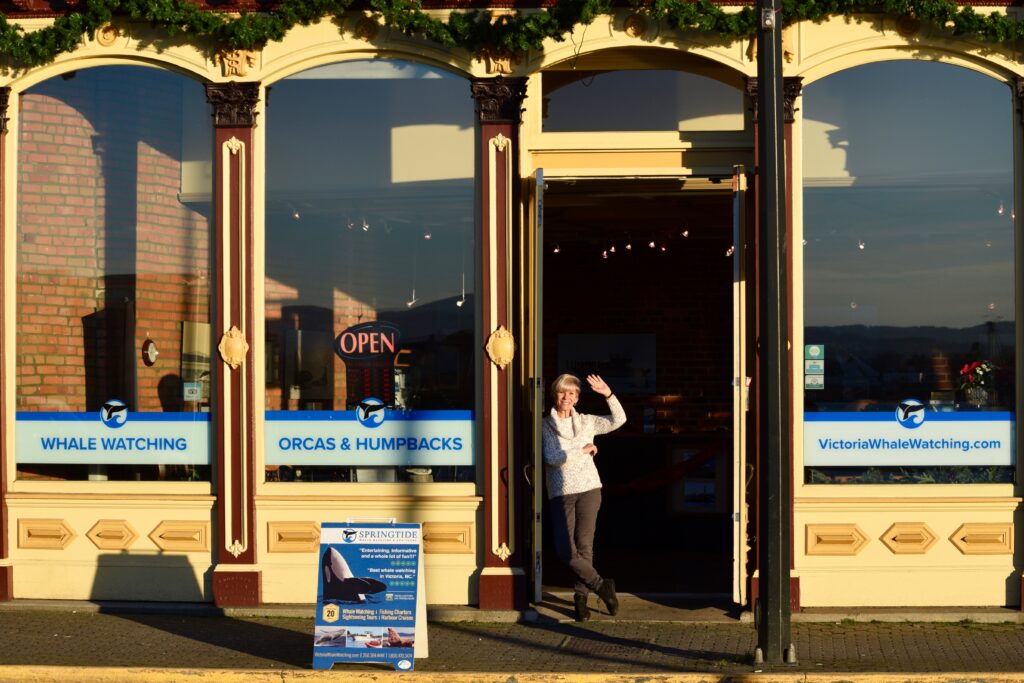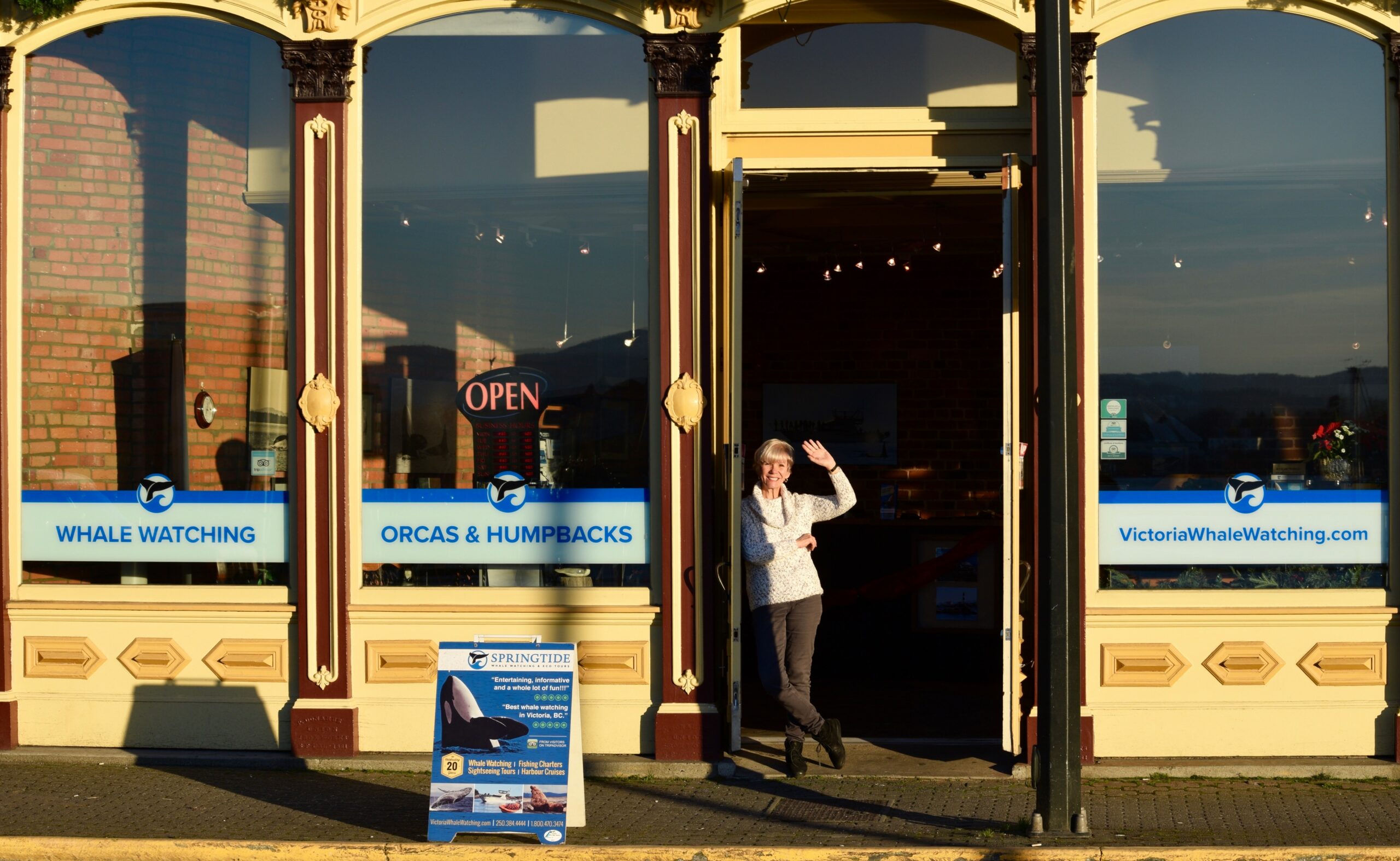When you make a reservation or check-in at SpringTide’s office at 1119 Wharf Street, it’s hard not to notice that this beautiful space has a history that spans generations before SpringTide made it home. In this blog, we delve into the history of this amazing building and share its fascinating past with you.

The building is named the Rithet Building (we’ll soon tell you why) and currently houses several businesses, occupying 1117-1125 Wharf Street. From an architectural perspective the building stands out as Victoria’s finest example of a West Coast iron front, featuring prominent external cast iron columns.
The building is named after Robert Patterson Rithet. While Rithet did not contribute to construction of the original sections of the building, he epitomized economic development in the province during the 1880’s and is likely the building’s most financially successful tenant to date. In 1882 he became the vice-president of Victoria’s Albion Iron Works (established 1861), which operated out of the Wharf Street office (the iron works subsequently providing the cast-iron columns for the newest sections of the building).
Over the years Rithet grew his wealth, investing in a range of business operations throughout western Canada. His resume includes Director of the Canadian Pacific Navigation Company, owner of flourmills in Enderby and Vernon, and the leading commission agent in the nascent salmon-canning industry. Following on from a number of successful business investments, Rithet was elected president of Chamber of Commerce of Vancouver Island, as well as president of the chamber’s successor, the British Columbia Board of Trade. Without harping on about Rithet’s successes for too long, it is important to mention that he also played a key role in civic and political society in the city, having been elected Mayor of Victoria in 1885.
With this in mind, be sure to look above the capital of each cast-iron column on the street front facades next time you pass by. You will notice that there is a caduceus, the astrological symbol of commerce, clearly pressed into the iron. This iconographic symbolism on the front building pays tribute to Rithet’s belief in the power of successful business to spur Victoria’s growth even in its earliest days, and is an important part of the building’s heritage value.
Perhaps the most interesting part of the building’s history is the discovery of the original Fort water well. In 1978, the Province of British Columbia bought the buildings and hired Mark Bautenheimer to restore them for office use. During the restoration process, they uncovered the original Fort well, complete with a mechanical pump. The well is of great historical importance as it played a critical role in early Victoria when drinking water was scarce. The well provided water for the nearby commercial buildings and wharves, until 1870’s when water began being pumped in from Elk Lake. At this time, it seems that the well was completely abandoned and left unused until it was rediscovered a century later. The well now takes pride of place in the buildings picturesque lobby.
The location of the Rithet Building is also worth mentioning as access to the rear of the building is via Helmcken Alley. The Alley is a living reminder of the network of Klondike-era courtyards and alleyways, which are a trademark of Victoria’s historic infrastructure. These days it is also popular stop on local ghost tours as it is rumored to be haunted by a man in old prison attire with chains shackled to his wrists and ankles. Story has it that this man was being transported down the alley in the mid 1800’s, when the guard escorting him beat and killed him. The building to the right of the alley was, at the time, a jail with prisoners regularly being hung in the courtyard at the end of the alley (now Bastion Square). We’ve never seen the ghost ourselves, but maybe you want to try your luck on a local ghost bus tour.
The long history of the Wharf Street building certainly extends into the historical Bastion Square, just around the corner. The ceremonial entry arch, erected in 1994, welcomes visitors to a historic sanctuary, featuring on three sides the first major public buildings constructed in British Columbia after its incorporation into the Canadian Confederation in 1871. Today, the Square is home to the popular Bastion Square Public Markets and the Maritime Museum of BC (both well worth a visit).
So, weather you’re into heritage buildings, Victoria’s early history or spooky ghost stories, SpringTide’s Wharf Street office is certainly worth a visit. And, while you’re here, be sure to ask us about our whale watching tours and fishing charters!

